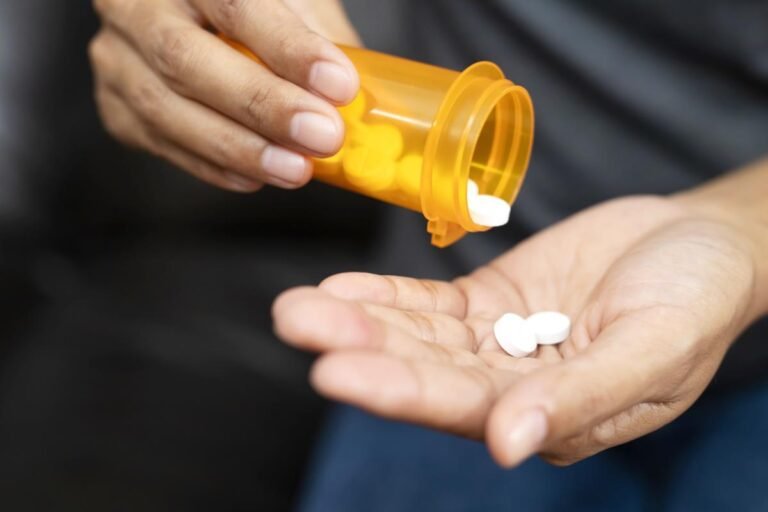Prescription Stimulant Addiction
Stimulants are a Schedule II class of drugs, including Adderall®, Ritalin®, and other prescription medications sometimes used to treat ADHD, Parkinson’s disease, or depression. Unfortunately, these medications can be habit forming and lead to full blown addictions for some people. Many people are left trying to overcome an unexpected substance use disorder with intense withdrawal symptoms.

What Are Prescription Stimulants?
Prescription stimulants are central nervous system (CNS) stimulants used primarily to treat attention-deficit hyperactivity disorder (ADHD) and narcolepsy. They are sometimes also prescribed for conditions like Parkinson’s disease, depression, or even for weight loss.
Common prescription stimulants include:
- Adderall® (dextroamphetamine/amphetamine)
- Ritalin® (methylphenidate)
- Dexedrine® (dextroamphetamine)
- Vyvanse® (lisdexamfetamine dimesylate)
Prescription Stimulant Abuse
Misuse of prescription stimulants has become widespread globally, including in the U.S., Canada, Australia, and Europe. According to the International Narcotics Control Board, prescription drugs are now the second most abused and trafficked drug in the world.
As of 2021, around 16 million American adults reported using prescription stimulants, with over 5 million of those individuals misusing them, often for cognitive enhancement, such as boosting focus and concentration. This is especially common among students using stimulants like Adderall® without a prescription to aid in studying.
Prescription stimulants are highly addictive because they stimulate the brain’s pleasure centers, similar to substances like cocaine or methamphetamine. Signs of addiction include seeking multiple prescriptions from different doctors, taking larger doses than prescribed, or using these drugs without a prescription.
Side Effects of Prescription Stimulants
These stimulants help users stay focused and alert by increasing the brain’s ability to use dopamine and norepinephrine. However, their side effects can range from short-term to long-term:
- Short-term effects include sleep disruption, abdominal pain, headaches, increased heart rate, erratic behavior, and even seizures at high doses.
- Long-term abuse can result in permanent cardiovascular damage, weight loss, respiratory issues, brain damage, and strong addiction.
Overdose and Treatment
A prescription stimulant overdose can occur when too much is taken or when mixed with other substances. Common signs include irregular heartbeat, stomach problems, high body temperature, and seizures. If an overdose is suspected, immediately call emergency services. Keeping the person hydrated and calm can help while waiting for medical assistance.
Addiction Treatment
Prescription stimulant addiction can be challenging to overcome without professional help. Treatment options include medical detox, rehab programs (inpatient, outpatient, or partial hospitalization), and various therapy approaches, such as cognitive behavioral therapy and contingency management.
Statistics on Prescription Stimulant Use
According to the 2021 National Survey on Drug Use and Health (NSDUH):
- 75.8% of stimulant misuse involved Adderall®.
- 16 million U.S. adults used prescription stimulants in the past year.
- Of those, 5 million misused the drugs, and 0.4 million developed prescription stimulant use disorders.
 Call us:(+233) 0531380360
Call us:(+233) 0531380360  Email
Email 
